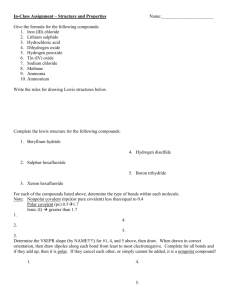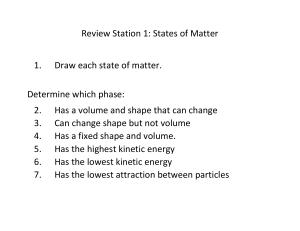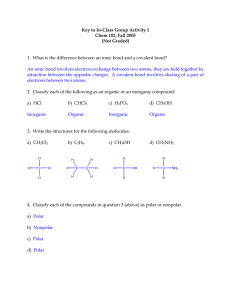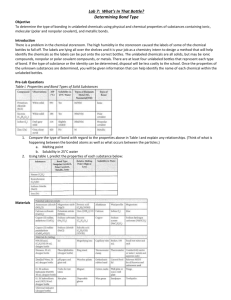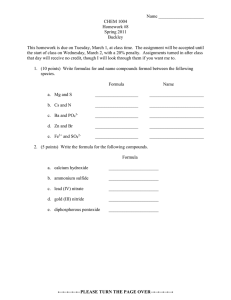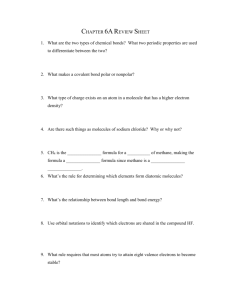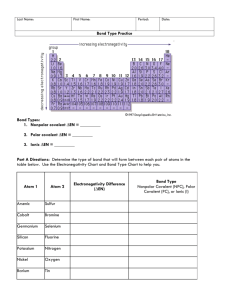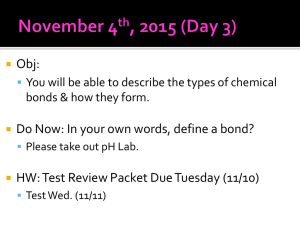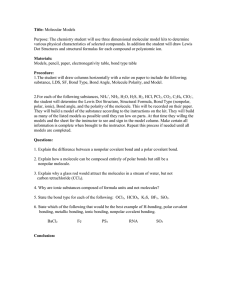Chemistry Lab: Identifying Unknown Compounds
advertisement
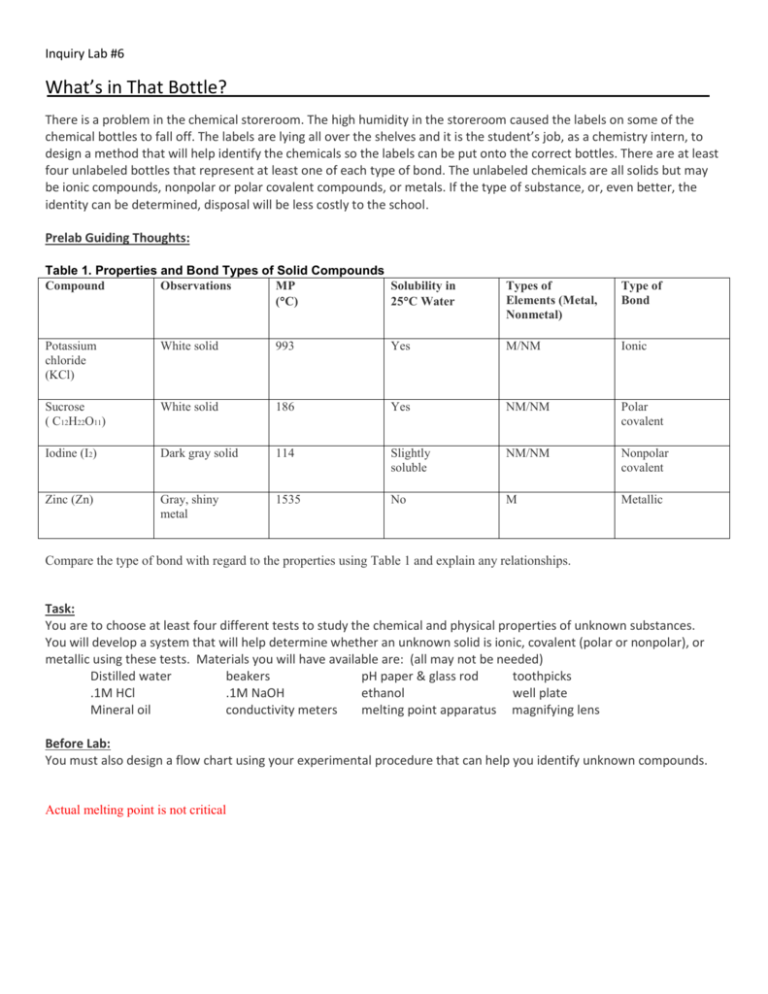
Inquiry Lab #6 What’s in That Bottle? There is a problem in the chemical storeroom. The high humidity in the storeroom caused the labels on some of the chemical bottles to fall off. The labels are lying all over the shelves and it is the student’s job, as a chemistry intern, to design a method that will help identify the chemicals so the labels can be put onto the correct bottles. There are at least four unlabeled bottles that represent at least one of each type of bond. The unlabeled chemicals are all solids but may be ionic compounds, nonpolar or polar covalent compounds, or metals. If the type of substance, or, even better, the identity can be determined, disposal will be less costly to the school. Prelab Guiding Thoughts: Table 1. Properties and Bond Types of Solid Compounds Compound Observations MP Solubility in (C) 25C Water Types of Elements (Metal, Nonmetal) Type of Bond Potassium chloride (KCl) White solid 993 Yes M/NM Ionic Sucrose ( C12H22O11) White solid 186 Yes NM/NM Polar covalent Iodine (I2) Dark gray solid 114 Slightly soluble NM/NM Nonpolar covalent Zinc (Zn) Gray, shiny metal 1535 No M Metallic Compare the type of bond with regard to the properties using Table 1 and explain any relationships. Task: You are to choose at least four different tests to study the chemical and physical properties of unknown substances. You will develop a system that will help determine whether an unknown solid is ionic, covalent (polar or nonpolar), or metallic using these tests. Materials you will have available are: (all may not be needed) Distilled water beakers pH paper & glass rod toothpicks .1M HCl .1M NaOH ethanol well plate Mineral oil conductivity meters melting point apparatus magnifying lens Before Lab: You must also design a flow chart using your experimental procedure that can help you identify unknown compounds. Actual melting point is not critical

